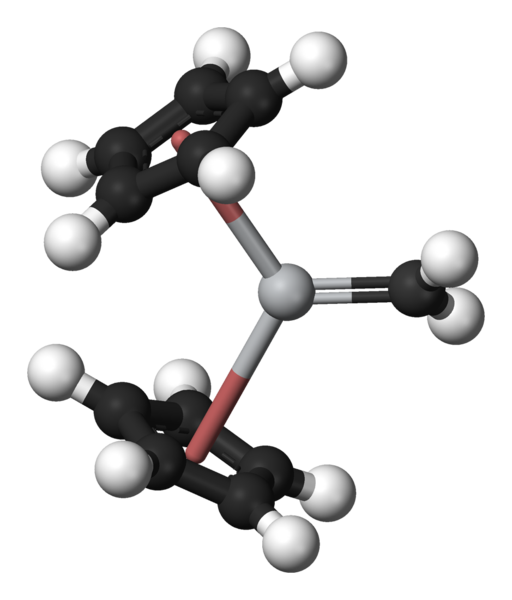Novel Ligands Improve Battery Development
Patent Status
| Country | Type | Number | Dated | Case |
| United States Of America | Issued Patent | 9,994,595 | 06/12/2018 | 2014-481 |
Images

Image: 3-dimensional representation of Carbene.
http://commons.wikimedia.org/wiki/File:Tebbe%27s-reagent-Shrock-carbene-3D-balls.png
Brief Description
Background: As technology grows, there is an increased demand of lithium ion batteries. Carbene chemistry has promising value in the advancement of lithium batteries. N-Heterocyclic carbenes (NHCs) have been found to exhibit extraordinary utility as ligands for catalysts and the stabilization of reactive species. Due to evidence from research, the NHCs convey distinct and sometimes superior catalytic properties to the metals they bind to.
Description: UCR researchers developed a novel fusion of N-heterocyclic carbenes (NHC) and carborane anions. This novel technique paves the way for the development of a broad new generation of polyanionic N-heterocyclic carbenes with distinct steric and electronic profiles. The properties of these carbenes allows us to use the catalysts for the batteries in a controlled way. The results indicate that the combination of two unusual forms of carbon atoms can lead to unexpected chemical behaviour. This strategy paves the way for the development of a broad generation of NHC ligands for catalysts for battery components.
Advantages
Applications
Contact
- Venkata S. Krishnamurty
- venkata.krishnamurty@ucr.edu
- tel: View Phone Number.
Other Information
Keywords
Carbene chemistry, lithium batteries, catalysts, carborene anions, N-Heterocyclic Carbenes, ligand, catalysis, battery components
